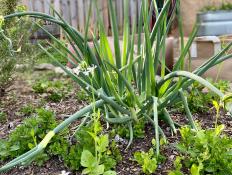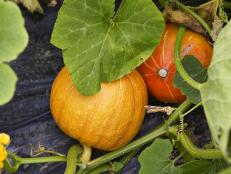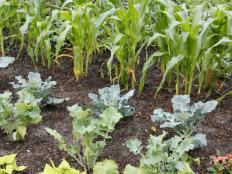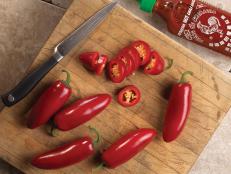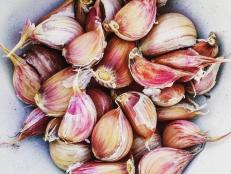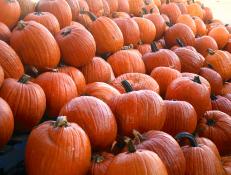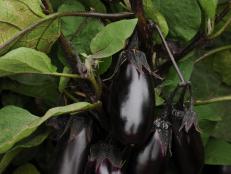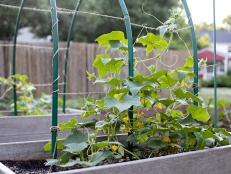Selecting Plants for a Tropical Garden

Materials and Tools:
large plant containers
soil amendments
herbs
recycled glass
floral tape
vegetable plants
dwarf fruit trees
shovel
trowel
Steps:
1. In planning — and planting — a kitchen garden, avoid thorny plants that can catch clothing; plants, trees or shrubs that produce sap or weep when branches are broken; and plants that produce inedible berries. Everything planted should be edible. The plants in our project include vegetables, herbs and dwarf citrus plants, all chosen with Asian cooking in mind. These plants are suited for the California climate, but for help with plants suitable for your climate, talk to the experts at your local garden centers and nurseries.
2. Before planting, amend the soil to ensure the plants have all the necessary nutrients for producing hardy vegetables, herbs and fruit. Check with a garden center or local agricultural extension office for a testing facility in your area. If the soil isn't tested, then use soil amendments that are meant to enhance the nutrient needs of vegetables and herbs. Also, keep in mind that herbs require a good, fast-draining soil that's rich in nutrients.

3. Before starting the garden area, we planted a lavender lady passionflower (Passiflora Hybrid 'Lavender Lady') to camouflage a pole near the garden perimeter. It will produce tendrils that will quickly climb the pole. To help it attach to the pole, we used bamboo stakes and also tied to the pole with twist ties. Floral tape or gardener's twine could also be used. Always tie vines loosely, to prevent damage to the plant. Passionflower is not edible, but the large, brightly colored blooms attract bees and hummingbirds, which in turn will pollinate the edible plants in the garden.

4. Lemongrass (Cymbopogon Citrus) is planted at the base of the passionflower. It has a wonderful fragrance, and the leaves are often used in Asian recipes. It will add height at the base of the pole, and when it becomes too large for the area, it can be easily divided and planted along the fencerow.

5. Planting continues with a dwarf giant banana (Musa Acuminata 'Enano Gigante'), which will add height to the area. The fruit is edible, and the leaves can be used to wrap fish for cooking. Golden la roma tomato (Tomato 'La Roma Gold'), a yellow Roma variety, is great in salads. Variegated calamondin orange (Citrus Reticulata 'Calamondin Variegata'), grown here in a bush shape, produces a slightly bitter fruit.

Siam queen basil (Ocimum Basilicum 'Siam Queen') has a spicy flavor, perfect for Asian cuisine.

Owari satsuma mandarin orange (Citrus Reticulata 'Owari') has a very sweet fruit, great for cooking. The leaves of dwarf bearss seedless lime (Citrus Aurantiifolia 'Dwarf Bearss Seedless') are used in Thai cooking.
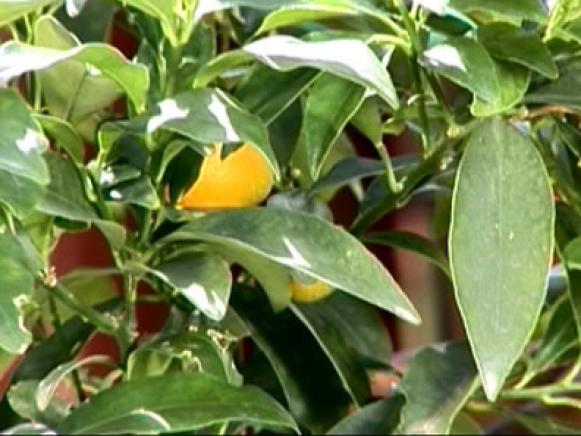
Other items included are: Ichiban eggplant (Eggplant 'Ichiban Imp'), purple ruffles basil (Ocimum Basilicum 'Purple Ruffles'), variegated oregano (Oreganum Vulgare 'Variegata') and Nagami kumquat (Citrus Kumquat 'Nagami').

6. Tumbled, crushed glass is used as mulch for the plants. Because it has been tumbled, it is safe for bare feet, children and pets. But the real bonus is that snails don't like to cross it, so it offers added pest protection for the newly planted vegetables and herbs.






